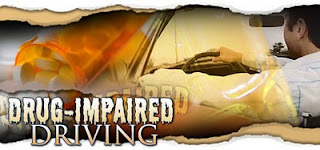December 3D Month. National Drunk and Drugged Driving Month!
Every day, 36 people in the United States die, and approximately 700 more are injured, in motor vehicle crashes that involve an alcohol-impaired driver.
This December, during National Drunk and Drugged Driving Prevention Month (3D Month), consider what you and your community can do to make injuries and deaths from impaired driving less of a threat.
The Problem
According to the National Highway Traffic Safety Administration (NHTSA), about three in every ten Americans will be involved in an alcohol-related crash at some point in their lives.
Alcohol-related crashes in the United States cost about $51 billion a year.
Protect Yourself and Your Family and Friends
During the holiday season, and year-round, take steps to make sure that you and everyone you celebrate with avoids driving under the influence of alcohol. Following these tips from NHTSA can help you stay safe:
Plan ahead. Always designate a non-drinking driver before any holiday party or celebration begins.
Take the keys. Do not let a friend drive if they are impaired.
Know How Communities Can Help
Proven community and state-level methods for reducing alcohol-impaired driving include:
This December, during National Drunk and Drugged Driving Prevention Month (3D Month), consider what you and your community can do to make injuries and deaths from impaired driving less of a threat.
The Problem
According to the National Highway Traffic Safety Administration (NHTSA), about three in every ten Americans will be involved in an alcohol-related crash at some point in their lives.
In 2006, 13,470 people died in alcohol-impaired driving crashes, accounting for nearly one-third (32%) of all traffic-related deaths in the United States.
In one year, over 1.4 million drivers were arrested for driving under the influence of alcohol or narcotics. This accounts for less than 1% of the 159 million self-reported episodes of alcohol–impaired driving among U.S. adults each year.
Alcohol-related crashes in the United States cost about $51 billion a year.
Protect Yourself and Your Family and Friends
During the holiday season, and year-round, take steps to make sure that you and everyone you celebrate with avoids driving under the influence of alcohol. Following these tips from NHTSA can help you stay safe:
Plan ahead. Always designate a non-drinking driver before any holiday party or celebration begins.
Take the keys. Do not let a friend drive if they are impaired.
Be a helpful host. If you’re hosting a party this holiday season, remind your guests to plan ahead and designate their sober driver, always offer alcohol-free beverages, and make sure all of your guests leave with a sober driver.
Know How Communities Can Help
Proven community and state-level methods for reducing alcohol-impaired driving include:
- Sobriety checkpoints. Studies found that fatal crashes thought to involve alcohol dropped by about 22% following implementation of sobriety checkpoints.
- Minimum legal drinking age (MLDA) laws. Studies found that raising the MLDA to 21 reduced crashes by about 16% among people ages 18.20 years.
- 0.08% BAC laws. Fatal alcohol-related crashes declined about 7% after 0.08% BAC laws were passed.
- "Zero tolerance" laws for young drivers. Three studies found that zero tolerance laws resulted in declines in fatal crashes among drivers ages 18.20 years of between 9% and 24%.


Comments